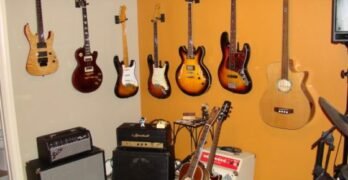
For many people, the science behind the microphone is simple: talk into this funny-looking gadget and some machine, somewhere, will be able to reproduce the sound.
Whether or not the microphone looks different from others isn’t always a top consideration, let alone the kind of technology that lurks beneath the plastic or metal casings.
But there really is a science behind these devices, and if you want to optimize the sound coming out of your lungs to capture it the best way possible onto a computer, you’re going to want to know the basics.
How do you tell which microphone is right for you? You get a basic understanding of the different microphone types, and learn their advantages and disadvantages. If the advantages cater to what you need out of a microphone, you might have found a match.
Dynamic Microphones:
Live microphones, according to Sound on Sound, are almost always dynamic microphones. You know the type – it looks like a black ball-on-a-stick. The science behind a dynamic microphone usually means that it is best suited for cheap, live hook-ups, but not necessarily a high level of sophistication and detail. They’re great for a party, but not necessarily for a plug-in-the-headphones type of experience.
Capacitor Microphones:
Capacitor microphones are usually more expensive than a live or dynamic microphone, but this increase in price comes with an improved ability to pick up high-frequency details and noise. One reason capacitor microphones are generally more expensive than other microphones like the dynamic microphone is that the sound requires a built-in preamplifier.
Electret Microphones:
An electret microphone is primarily a “subset” of the capacitor microphone, but usually with a reduction in cost. A microphone like this will require a preamplifier in order to secure proper sound conversion, but if you have plenty of sound equipment lying around, this shouldn’t necessarily be a problem.
Understanding the types of microphone suited to your needs doesn’t only mean knowing the types of microphones available out there, but what they’re good at. If you’re a band that only performs live, you’ll probably only need basic dynamic microphones – these can pick up instruments such as drums just fine, and they don’t cost as much as other types.
If you’re more concerned with achieving studio-quality sound for recording purposes, you’ll want something with more sensitivity and capacity, like a capacitor microphone.


Leave a Reply